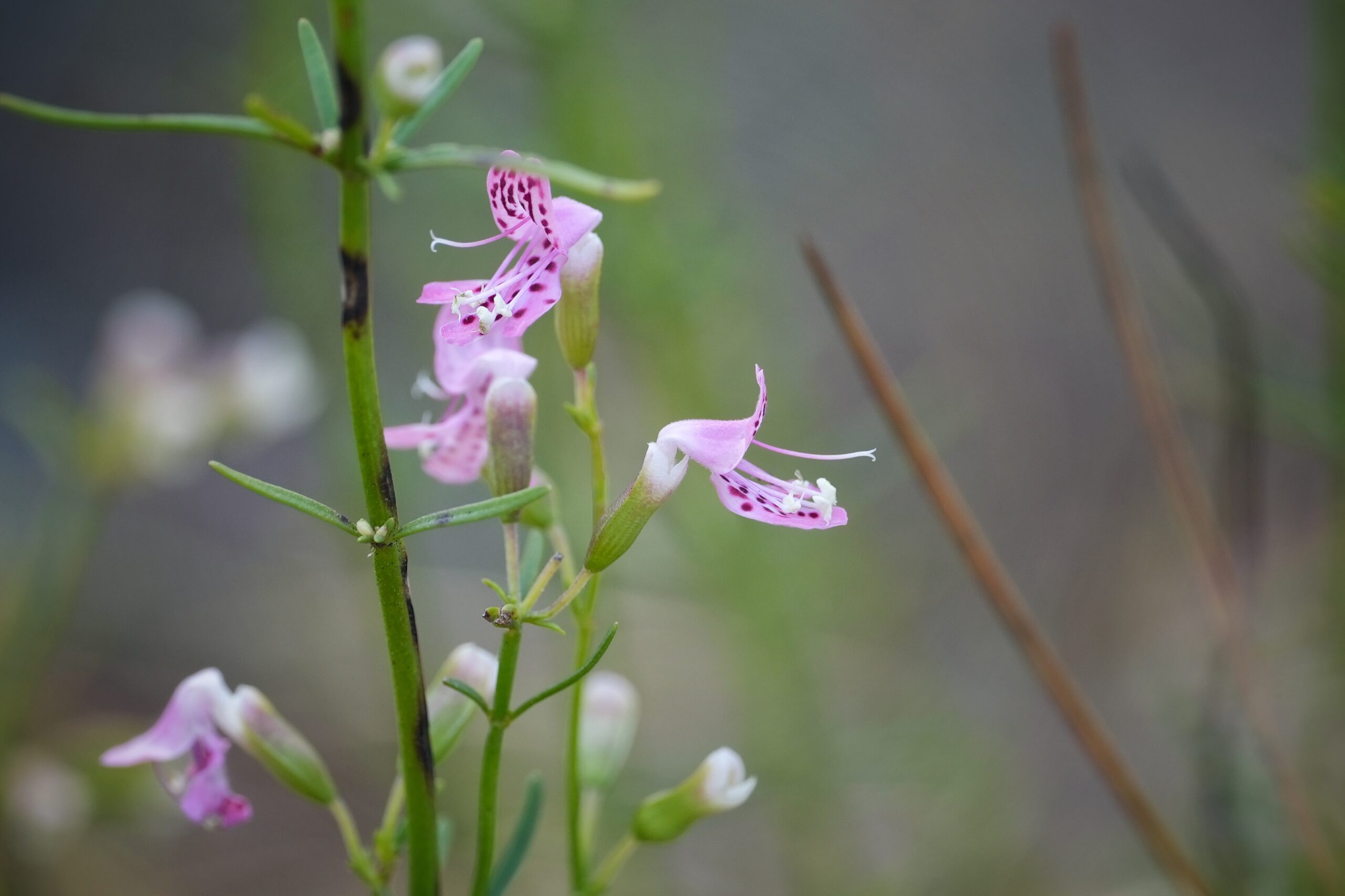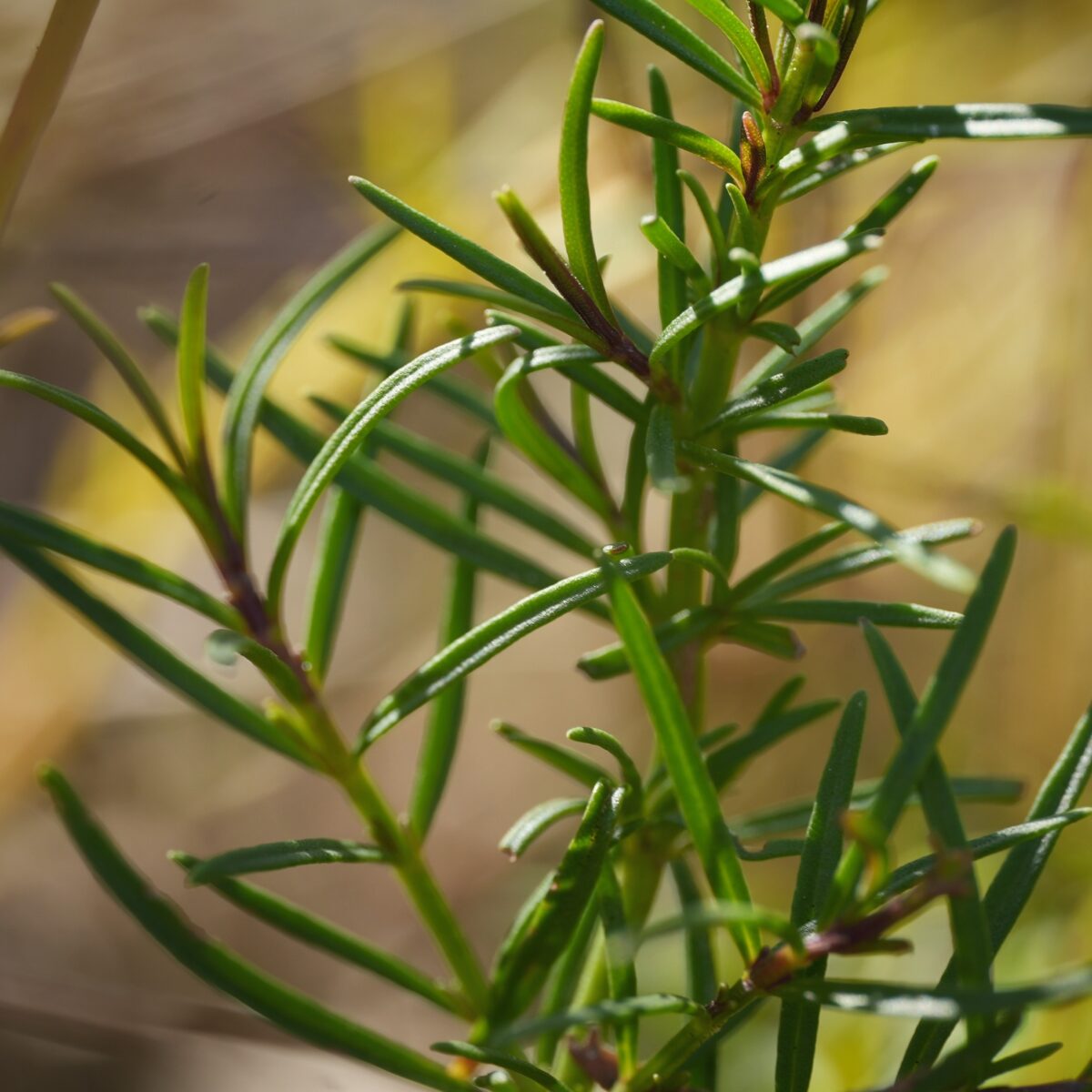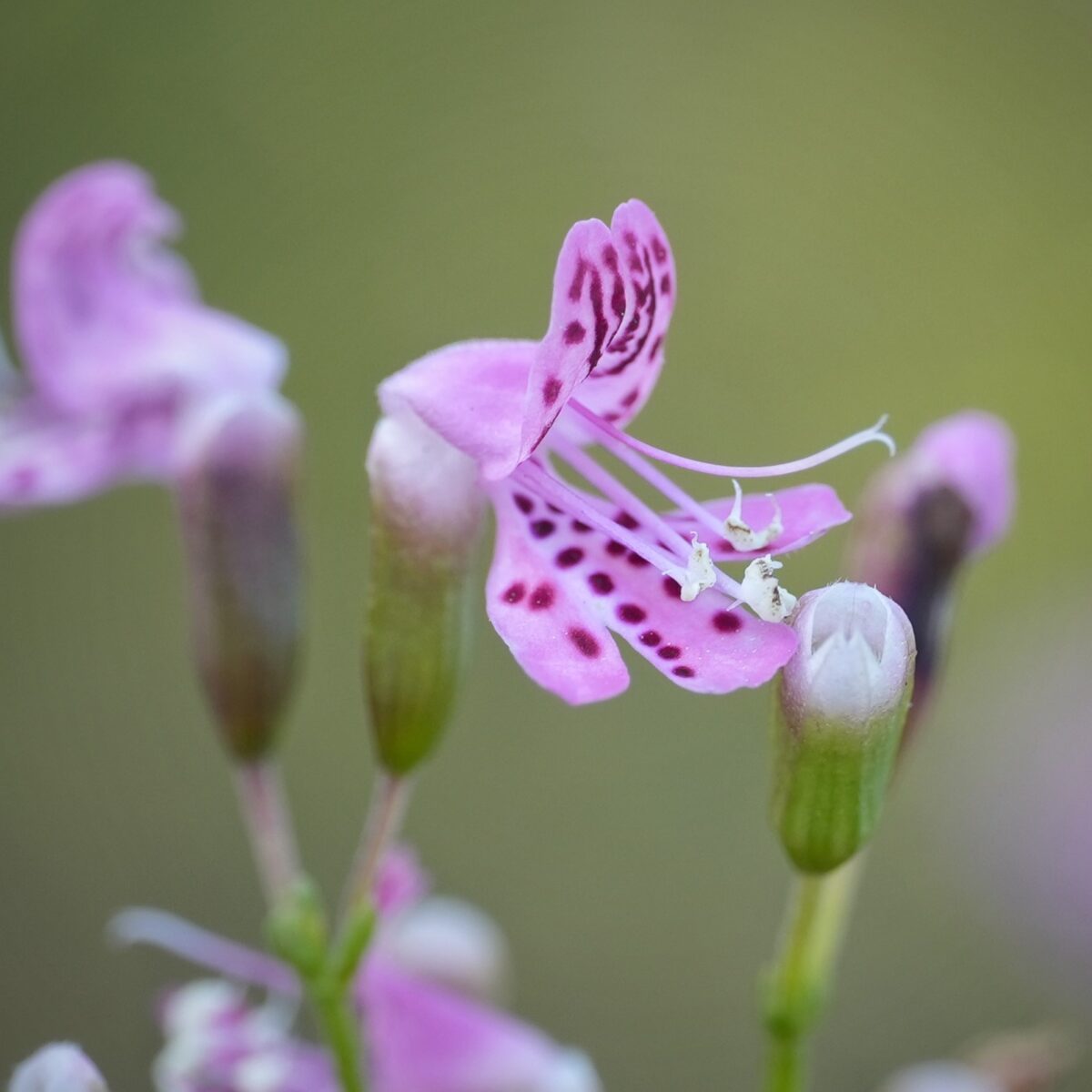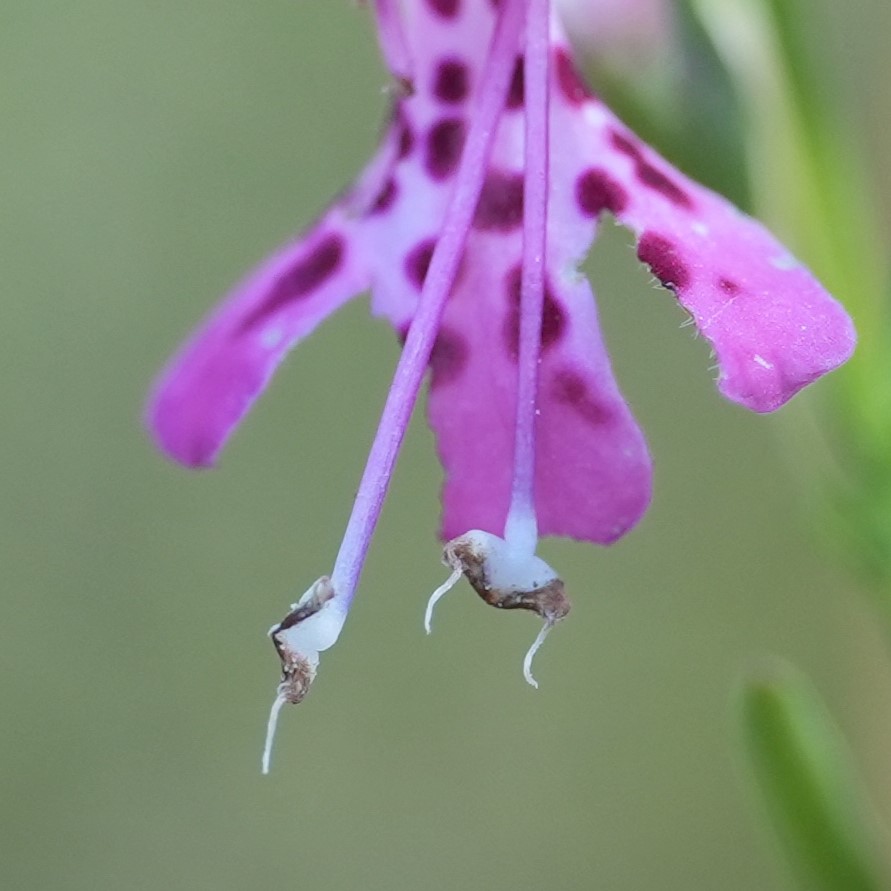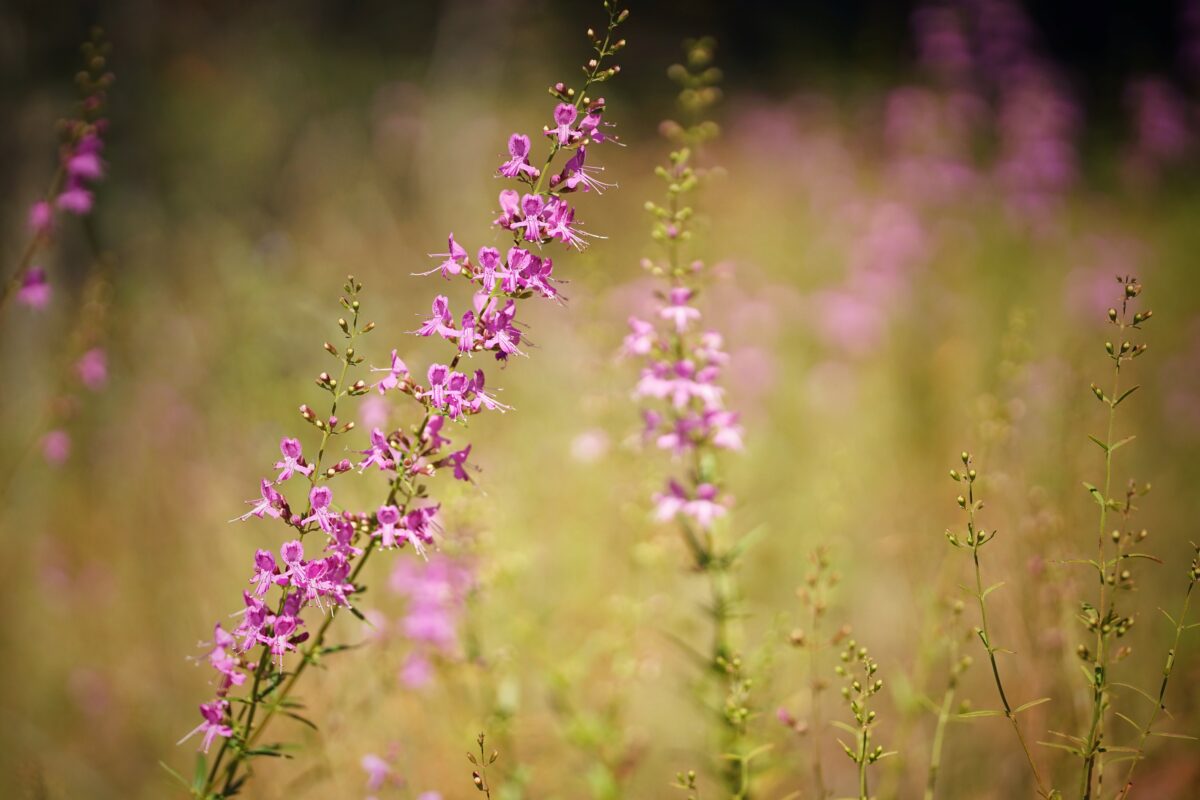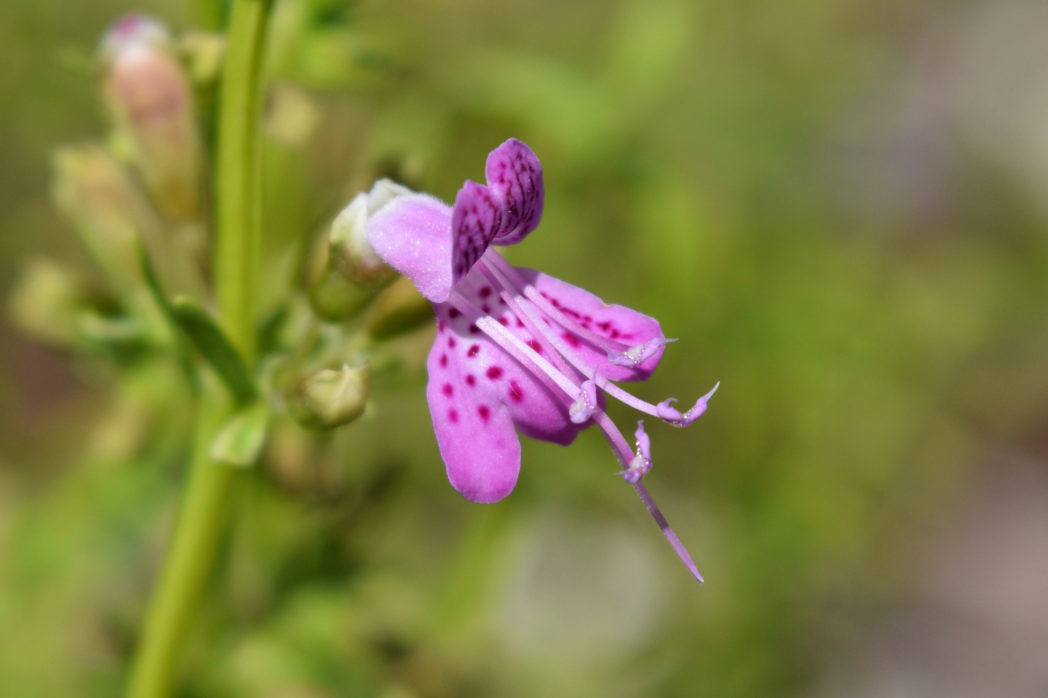Longspur balm
Pictured above: Longspur balm (Dicerandra cornutissima) by Emily Bell. Click on terms for botanical definitions. View post as a PDF.
Longspur balm (Dicerandra cornutissima), also commonly known as Longspurred mint, is a vibrant purplish-pink wildflower endemic to the sandhills and white sand scrub of Marion and Sumter counties. It is both state and federally listed as endangered and considered extirpated from Sumter County. Of its remaining populations in Marion County, some grow on protected conservation lands, while others occur on increasingly fragmented private lands, roadsides and powerline rows, which face challenges from development and other disturbances.
Longspur balm flowers are small, two-lipped and bright purplish-pink with dark purple lines and spots and a whitish throat. They are grouped in the leaf axils mostly on the upper herbaceous stems. The flower’s stamens extend beyond the corolla and the white to lavender anthers bear a long spur (1.2 mm), hence the common name. Seeds are born in four small nutlets. The leaves are around 1.5 cm long, opposite, needlelike and have a pleasant minty aroma. This low-growing shrub is woody at the base and bears many erect stems.
The genus Dicerandra is endemic to ancient sandhill habitats in the Southeast US. Of the 10 species currently described, eight are found only in Florida. They are extremely specialized to the site conditions where they grow.
Family: Lamiaceae (Mint family)
Native range: Marion and Sumter counties.
To see where natural populations of Longspur balm have been vouchered, visit florida.plantatlas.usf.edu.
Lifespan: Short-lived perennial
Soil: Well-drained sand
Exposure: Full sun
Growth habit: Up to 2 feet tall and as wide
Longspur balm is not commercially available. Visit a natural area to see it.
For information on other Dicerandra species, see these resources:

